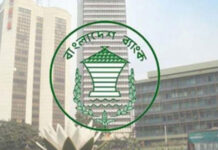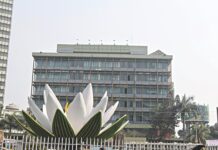Banks saw less profit in 2015 owing to low credit demand, cautious lending policy and the sluggish business environment.
The outgoing year started with opposition-sponsored violent agitation programmes for three months, which impacted the banks’ business to a certain degree.
But it is the hangover from the big scams of 2011-12 that weighed the heaviest on the banks’ business: they were simply cagey when it came to disbursing loans, which eventually hit their profitability, according to several bank officials.
“It’s an entirely new problem for banks,” said a high official of a private bank.
Zaid Bakht, chairman of Agrani Bank, however, differed.
He said the state-run commercial bank’s board has been busy as before, approving various big and small loan proposals.
For instance, a few days ago the Agrani board approved a loan proposal of about Tk 250 crore. But the loan was tagged with a condition: its disbursement will start after the gas and power connections are provided to the industrial unit.
The bank’s higher management and the board set disbursement targets for the branches, but the officers still prefer to remain cautious.
“If the loan is not granted, the officer’s salary will still be paid. But if he gives out loans and they turn out to be bad, it will plunge him into trouble,” Bakht said while describing the bank’s field level loan officers’ approach.
Ahmed Kamal Khan Chowdhury, managing director of Prime Bank, said previously banks gave out loans recklessly. “This is not happening now, so the lending is low.”
Compliance in different banks is now being reinforced, which is negatively related to growth, he said.
If compliance is strictly enforced, good business is not expected, he said.
This year, the central bank put stress on compliance rather than risky lending, said SK Sur Chowdhury, deputy governor of Bangladesh Bank.
So, the banks had to lay emphasis on improving governance. “For that, if growth is less for the time being, then so be it. In the long run, it will yield good results,” he added.
Previously, 22 banks could give credit to one client, but that practice has now been stopped, Chowdhury said.
However, Zahid Hussain, lead economist of the World Bank’s Dhaka office, said no serious policies or legal efforts were undertaken to fix the systemic governance failures.
He cited the BB’s flexible large loan rescheduling policy, which offers a repayment period of up to 12 years, discounted interest rates, down payments in cash and repayments in quarterly instalments.
This provision helped make banks’ financial conditions look better on paper, according to Hussain.
“Such a policy, while may be justifiable on grounds of pragmatism, signal tolerance of repayment indiscipline leading to moral hazards by nurturing expectation of financial bailout despite irresponsible risk taking on the part of large borrowers,” he added.
A banks’ profit depends on disbursing new loans and recovering those.
Besides credit, banks also make profits through the export and import business and this avenue has not been kind to them either.
In other words, the export-import growth has been slow.
In the first six months, the banks’ operating profit decreased 1.2 percent year-on-year, according to central bank statistics.
The private and state-owned commercial banks’ profits increased about 4 percent but that of the foreign commercial banks dropped 18 percent.
Several bankers said they were hoping the business will pick up in the second half of the year, but that did not materialise either.
Hussain said the overall demand for credit is weak, with imports remaining flat and private investment continuing to stagnate.
Macroeconomic policies have been congenial for the development of the private sector in Bangladesh but the general state of the business environment has remained problematic, according to Hussain.
Anis A Khan, managing director of Mutual Trust Bank, too acknowledged that there are some weakness in overall investment climate.
Normally, banks can lend 80 percent of their total deposits, but on November 5 their advance-deposit ratio stood at 70.31 percent.
In case of state banks and foreign banks, the ratio is much lower, which means these banks could not invest a big amount of their loanable funds.
Chowdhury of the central bank however refuted the bankers’ claim that the demand for credit is low.
“The banks have to be productive. They need to change their mindset. Instead of giving big risky loans, they would have to diversify their loan portfolio to micro-credit, SMEs.”
At present, there is about Tk 122,909 crore of excess deposit lying around.
But a BB official said the whole amount is not lying idle.
The banks have invested in various securities that the government has been using in different development projects. Taking that into account, the amount of unutilised money is actually Tk 2,811 crore, he said.
Apart from profitability and credit growth, the banks’ financial health also did not improve much in 2015.
On December 31, 2014, the total default loans stood at 9.69 percent of the total outstanding loans. The ratio swelled to 9.89 percent in nine months.
In September, the capital adequacy ratio stood at 10.53 percent, which was 11.35 percent nine months earlier. This means the banks’ capital situation has shrunk instead of increasing.
Bangladesh’s banking sector remains one of the weakest in the region because of weak asset quality, poor capitalisation and low profitability, particularly in the state banks, says London-based BMI Research in a report released early this month.
“Going forward, we maintain our bearish view of the banking sector as profitability and solvency will remain key challenges amid weak standards of corporate governance and underdeveloped risk management systems,” it added.
Source: The Daily Star










